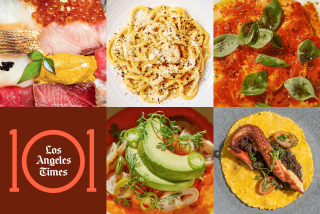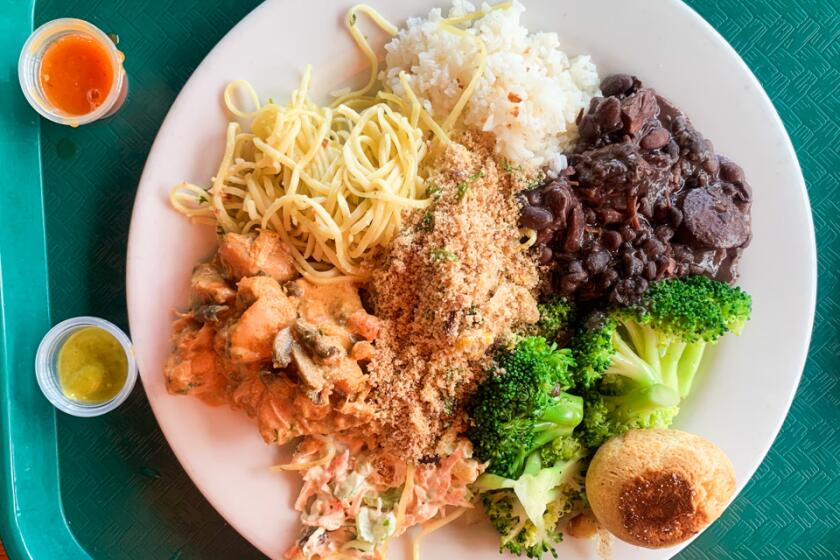Eat, Drink, Man, Woman
A curious thing about food history is that historians, when they entertain it at all, consider it a quaint diversion. Given humankind’s interest in food for nourishment and enjoyment, this lacuna is a surprise. The few extant food histories tend to be uncritical and unsystematic in their approach and characterized by antiquarianism. Felipe Fernandez-Armesto, a Professorial Fellow of Queen Mary, University of London, understands this situation and hopes his “Near a Thousand Tables: A History of Food,” will fill this gap in serious food histories.
The title of Fernandez-Armesto’s book, which comes from a line in a William Wordsworth poem, seems ironic since he veers far from the table, offering by his own admission not a history of food, but a “useful alternative”: “to take a genuinely global perspective; to treat food history as a theme of world history ... to treat evenhandedly the ecological, cultural and culinary concepts of the subject ... to trace connections, at every stage, between the food of the past and the way we eat today; and to do all this briefly.” Well, if it looks like a duck and quacks like a duck, it’s a duck: This book is a history of food.
This Braudelian desire for “total history” is a tall order, and one is skeptical that it can be useful and brief. In fewer than 300 pages, he identifies eight revolutions that define the history of food, ranging from the invention of cooking to the discovery of New World foods to the modern industrial revolution in food production.
The first revolution, cooking, transformed society. Although I find his definition of cooking overly broad (I don’t think of the marinating of fish for a ceviche as cooking), one can agree that cooking was an important invention because it forged community through cooperation.
Eating has meaning beyond nourishment: It has ritual and magical aspects, the most salient for Fernandez-Armesto being cannibalism. Cannibalism is the topic food writers love to write about. The scenes of human limbs butchered for the grill or of cannibal women supping blood and biting entrails makes for lively reading, but Fernandez-Armesto takes the subject further. His discussion of the common ground shared by cannibals and vegans is brilliant, focusing on the purpose of cannibalism, not the reality or morality of it. (He excludes “famine cannibalism.”)
Is cannibalism nutritive or is it ritualistic? He points out that most societies that practice cannibalism do so for its ritualistic aspects: Cannibals eat human flesh to transform themselves into better or more powerful humans. The modern counterpart of the cannibal is the vegetarian, who for virtuous reasons and rarely for nutritious ones, eschews meat, thinking he or she is better for it.
The graphic descriptions of the effects of scurvy, his discussion of the connection between food and health and his critique of dietetics--the science of applying the principles of nutrition to the diet--make for some of the book’s most rewarding reading.
For more than a thousand years, the humoral theory of Galen, the second century Greek physician, postulated that the four fundamental elements of the world have counterparts in the human body and that those counterparts have to be in equilibrium. This theory prevailed until its discrediting by modern science. So Fernandez-Armesto is right to argue that “the notion that diet should serve to preserve a balance between yin and yang is, essentially, a humoral theory: we have rejected humoral theories of Western origin, but those which come clouded with emanations of the ‘mystic East’ manage to retain their Western adherents.” But we’d like to see a more sustained argument, especially given the contemporary popularity of health and diet fads.
One of the wackiest, and one of my favorite, if not totally convincing, arguments in this book is that snails ought to have an honored place in the history of food because they were “herded” by primitive man. Challenging the received wisdom that an increase in the consumption of mollusks and snails in a society can be explained only by a shortage of bigger game, he argues that snail breeding is an overlooked revolution in the history of food because the easily managed creatures had considerable advantages. His argument is not as far-fetched as it sounds.
After cooking, the invention of agriculture ranks as the next big innovation of the human species in relation to food. The traditional argument is that agriculture developed from gathering and herding and that herding was a result of diffusion from one place. Fernandez-Armesto does not accept this view. Herding, in his mind, is not extraordinary, but developed at the same time as gathering and hunting. While making for interesting reading, his evidence is merely anecdotal and doesn’t support a systematic argument. Some of the analogies are a bit of a stretch, for example, likening cheese-making to hunting because the exposed milk traps bacteria.
There is no argument that the invention of agriculture was a major revolution in the history of the world. But to say that the next great revolution is the Columbian exchange of the late 15th century, when Columbus brought new foods to the Americas and brought back foods from the New World such as tomatoes and potatoes, ignores the Arab agricultural revolution of the 8th to 12th centuries, a revolution as important as the Columbian exchange. Without it the West would not have macaroni, oranges, sugar, Asiatic rice, spinach and a host of other foods.
The origin of agriculture is a hotly debated topic and Fernandez-Armesto masterfully lays out some of these arguments. But to conclude that farming is something that could have just happened, “a revolution by accident,” and is not a conscious result of organized, goal-oriented human activity, seems intellectually unsatisfying.
Furthermore, Fernandez-Armesto’s argument is hindered by his sloppy discussion of wheat. It is incorrect to say that durum wheat is not particularly gluten-rich. Durum wheat is gluten-rich and it is that fact, coupled with its low moisture content, that makes it the sui generis food that it is. Durum wheat products, in the form of macaroni, couscous, bulgur and hardtack, were revolutionary 1,000 years ago when their long shelf life was critical in times of perennial famines.
Fernandez-Armesto seems to make a distinction between “cracked wheat” and “bulgur,” but they are essentially the same. And to describe bulgur wheat grains as a form of couscous is plain wrong--they are two separate things, although both are made from durum wheat.
Learning how food became a social differentiator, about world gastronomy and the role of long-range trade is a pleasurable read but I have a few complaints. Kushuri, a popular Cairo street food of rice and lentils, has a history much older than having been brought by British forces as he claims. And chili con carne does not contain black beans, but red kidney beans (although purists, as he correctly points out, don’t use beans at all). How can he say that the pigeon pea has not established a place in the culinary repertoire to rival the black-eyed pea when it is the pea used for split pea soup and the Indian dal? He misidentifies the 13th century “Baghdad Cookery Book” as “the 10th century text known as ‘The Baghdad Cook.’” These are quibbles, but it is this lack of rigor that has marred food history in the past.
Fernandez-Armesto has written a book more polemic than history. His central concern is that the modern, post-industrial relationship of humans with nourishment is somehow desocializing, that “food on the fly [fast food, prepared food] feeds the value of hustle, nourishes the anomie of postindustrial society.”
His hope that the next food revolution will subvert the last (the fast-food one we’re in now) rests in part on the negative aspects of modern food technology. We may intuitively accept this delicious proposition, but doesn’t there need to be an argument? Is it so self-evident? After all, much about cooking is drudgery and that’s why women in the 20th century wanted liberation from it. If he wants them, and men, back in the kitchen, he has to tell us the benefits.
Even as a polemic, “Near a Thousand Tables” is an appetizingly provocative book with a critical approach and an allusive writing style that avoids an antiquarian’s infatuation with arcana. Who cannot appreciate his superb description of the proper way to eat an oyster: “Unless you.... raise the half-shell to your mouth, throw back your head, scrape the creature from its lair with your teeth, taste its briny juice and squelch it slightly against the palate before swallowing it alive, you deprive yourself of a historic experience.” It’s a book one can sink one’s teeth into, but whether one comes away sated or not is another question.
More to Read
Eat your way across L.A.
Get our weekly Tasting Notes newsletter for reviews, news and more.
You may occasionally receive promotional content from the Los Angeles Times.






